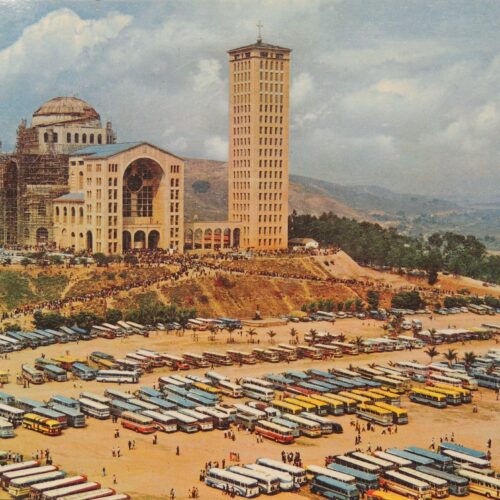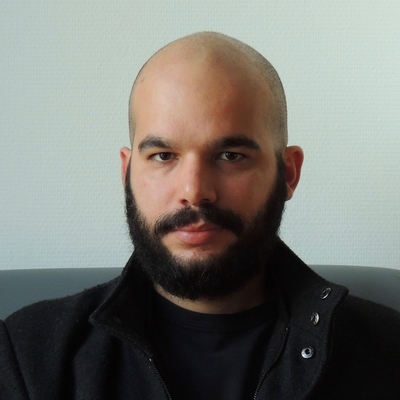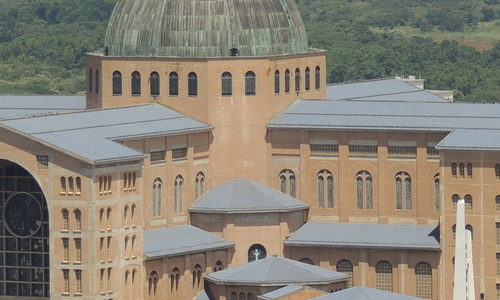Adriano Godoy - 3 March, 2021 Buildings, Images, Blogs, Publications

Year of birth: 1989
Current position: PhD Candidate in Social Anthropology, University of Campinas
My research focuses on the ongoing construction of the National Basilica of Our Lady Aparecida as a powerful catholic symbol and a monument of Brazilian nationalism. Through an analysis of its building process, my thesis objective is to understand how it may anthropologically elucidate questions regarding the materiality of religion – mainly on topics such as sacred art, religious spaces, sensational forms and catholic institutionalization.
Since 2015, my fieldwork consists of an ethnography of this construction, which encompasses periodic visits to the Basilica during many events and rituals related to the inauguration of new areas. Furthermore, I carried out several research visits to some of the archives of the Catholic Church, searching for documents related to the Basilica’s history since the 1930’s but focused mainly on the modernization period beginning in the year 2000. Additionally, I conducted interviews with visual artists, engineers, bishops and priests concerning the work of planning and coordinating the building. In this manner, I intend to investigate how this specific mega-church building, recognized as one of the world’s largest temples, is produced through three main topics.
The first one is about how the Catholic Church, as a powerful institution related to the Brazilian State, was able to plan and execute this project with strong support both from the federal government and from the Vatican. My ethnographic material showed the relations between the bishops and the politicians since the Monarchy, throughout two dictatorships and the democratic periods. Regardless of the different politics and theological points of view of each period, there has been a relation between the Catholic Church and the Brazilian State, mainly after the Second Vatican Council, to seek a common basis in the construction of the Basilica as a nationalist monument translated to Catholic moral values.
The second topic is about how the artists intended to perform the construction of the Basilica and how they translated the theological and political references in an artistic language. According to Calixto – the Basilica’s first architect, inspired by Neo-Romanics – the project was essentially anti-communist, focused on the representations of devotion to Our Lady Aparecida as Queen and Patron of Brazil. Since the year 2000, the project of Pastro – the last artist hired, inspired by the Byzantines – has turned the church into a mainly pro-life space, focused on the devotion to Jesus Christ as the creator of all life in Brazil, from animals and plants to the three races of human beings.
Lastly, the third topic is about how the theological, political and artistic projects are enacted by specific materials such as gold, stone, wood, wax and clay. I examine the motivations behind the religious uses of these materials by the National Basilica’s constructors and aim to understand how this interferes with the religious experiences of its visitors.
I am currently a Visiting Researcher at Universiteit Utrecht from September 2018 to August 2019 supported by São Paulo Research Foundation (Grant Number: 18/08791-0). My doctoral research is under supervision of Professor Ronaldo Almeida in Brazil and of Professor Birgit Meyer in Netherlands.

Godoy, Adriano S. -O Papa é o melhor prefeito que a cidade já teve-: uma etnografia da paisagem urbana na capital da fé. RELIGIÃO E SOCIEDADE, v. 37, p. 38-63, 2017.
Godoy, Adriano S. Aparecidas no cotidiano. R@U : REVISTA DE ANTROPOLOGIA SOCIAL DOS ALUNOS DO PPGAS-UFSCAR, v. 9, p. 107-121, 2017.

Adriano Godoy - 28 September, 2018 Buildings, Galleries